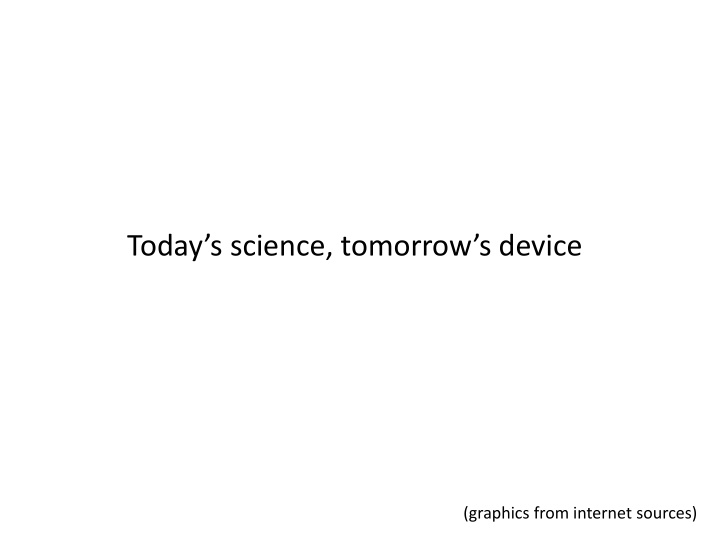



Today’s science, tomorrow’s device (graphics from internet sources)
Quartz crystal
Sundial Egypt, 3500 BC
Water clock Hourglass Mesopotamia, 1500 BC 150 BC to 1600 AD
Simple Pendulum: Reports of its knowledge by Chinese since 1 st century Studied in detail by 17 th century Galileo Galilei and Christiaan Huygens – first to think of “TIME KEEPING DEVICES”
Simple Pendulum to CLOCK ! Next 300 years, it monopolized time-keeping device !!
current Resonance quartz frequency A 32768 Hz
Shadow clock Egypt, 3500 BC Water clock Mesopotamia, 1500 BC Hourglass 150 BC to 1600 AD Period: 1 day Error: minutes per hour Period: ~ Minutes to hours Error: minutes per QUARTZ clock hour 1927 – Period: Minutes to hours Error: seconds per hour Period: One second Error: seconds per day Period: 1/32768 s Error: seconds per week
Atomic Clock: Error: less than a nano 6,834,682,610.904 Hz (Rubidium) second per day cavity Absorption of microwave Resonance frequency f 0
Wikipedia
What can we do with “precise” clocks? Global Positioning System (GPS):
How does it work? • Ground stations synchronize the GPS clocks. • GPS satellites transmit their positions. • Receiver analyzes its distance from each of the satellites, and calculates its position on earth.
Computing devices: Abacus 1000 BC
Mechanical calculators: Pascaline, 1652
Mechanical calculators: Comptometer: used in world war I and II
Electric charges: Michael Faraday: What’s the use? Soon you will pay for it
Resistors conductors Semiconductor
Semiconductor diode A I P N V 0 One-way switch
Semiconductor Transistor ON Bit 1 Bit 0 OFF Binary logic
First digital computer ENIAC, 1945 30 tons, 20 kW power
1,400,000,000 transistors !!
Gordon E. Moore, co-founder of intel
Transistor size: What happens when we hit atomic limit? Can single atoms be a transistor?
Physics of everything: Quantum Field Relativity Theory Speed Quantum Classical physics physics Size
Quantum computers !! 0 qubit 1 qubit superposition qubit
Quantum world is strange !! Quantum computers, if built, can be more powerful than the classical computers For example: 23, 29 Factoring: What are the factors of 667? Unsorted atabase searching.
Nucleus as a transistor:
Dr. Umakant Rapol Dr. T. S. Mahesh Dr. Rejish Nath Dr. Santhanam
Recommend
More recommend